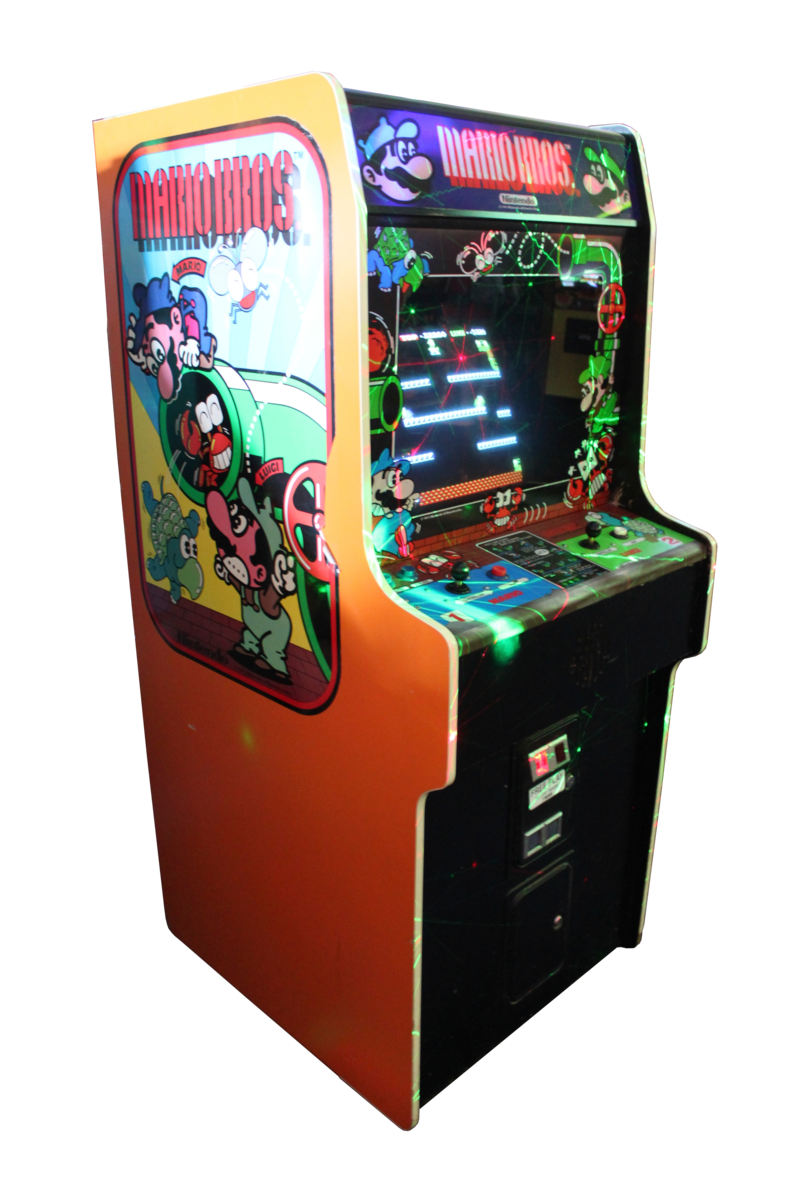Jump to Attack
As with Donkey Kong, Mario Bros. was created by famed developer Shigeru Miyamoto and future Game Boy architect Gunpei Yokoi. One of
the most important changes to Mario's behavior in this game is fall damage. Yokoi believed he should be able to fall from any height
without injury, which Miyamoto felt at first would make the game "not much of a game", but ultimately agreed when Yokoi created a
prototype featuring Mario jumping and bouncing on the screen. Next, Yokoi decided that the method of defeating enemies should be
attacking from under the floor. It made the game very easy when it was designed to kill the enemy, so this was changed to immobilizing
it and requiring Mario to jump onto the platform and kick it out of play before it stands back up, moving faster.
Putting the Hammer Down
Mario's appearance got Miyamoto thinking he doesn't seem like a carpenter with his overalls, hat, and mustache. So the game was
designed with a sewer setting, with Mario taking on the role as a plumber. This choice of setting was based on New York's network of
sewage pipes and Japanese comics that he read, which featured pipes lying all over waste grounds. Pipes were designed in the game for
enemies to appear and disappear from the screen in a nice, cartoony and tidy fashion so it wasn't littered with enemies at the bottom,
and also to add to the challenge.
Oh Brother
Mario Bros.' gameplay was inspired by Williams Electronics' Joust from the year before, right down to the two-player co-op gameplay
and everything taking place on a single-screen. The co-op feature was not only seldom seen in video games at the time, but also gave
way to the introduction of Mario's brother Luigi, who was at first nothing more than a palette swap of Mario.
Out the Pipe
On about April 4, 1983 (although the actual release date in Japan or the US isn't agreed upon), Mario Bros. was released. It was a
success, but like Donkey Kong Jr., it wasn't nearly the success of Donkey Kong, which may have been partly due to the video game crash.
Nonetheless, it served as an intermediary between the 1981 juggernaut and the 1985 industry savior that was Super Mario Bros, which
spawned a long-running game series loved worldwide. A lot of elements from Mario Bros. were used and expanded on in the NES platformer,
such as jumping up and hitting blocks from below to kill enemies walking on them, the Shellcreeper turtle enemies being reintroduced as
Koopa Troopas, and collectable coins.


